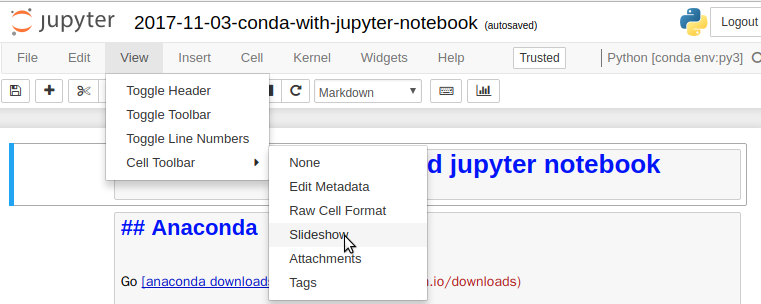
I haven’t tested it in great detail but it appears to me that the above steps should work even if you want to use it for a virtualenv. Now when I fire up my Jupyter Lab from within my base environment I also see my ds-base env available as an interpreter. (base) $ ipython kernel install -user -name=ds-base
In your bash/terminal enter the following commands: $ conda activate base Long story short, I did the following to enable my ds-base environment to show up in my Jupyter Lab, and I think this logic can be extended to as many environments available in your system. Inside Jupyter Lab I tried to fire up my data science explorations environment ( ds-base) and realised that Jupyter was not showing it as one of my available interpreters. I installed Jupyter Lab on my base environment. To install Keras, we need to type the below command: conda install -c anaconda keras. conda activate kerasenv Step 3: Install Keras. Now, activate the environment created above.

I recently reformatted my comptuer and set-up my usual dual-boot - Ubuntu 18.04 and Windows 10. conda create -name kerasenv Step 2: Activate the environment. I just find it easier to spin up a new environment for simple tasks) When I’m working on a specific project I usually end up building a specific environment for that project (yes I don’t use docker for every project.

Step 4: Just check your Jupyter Notebook, to see the shining firstEnv. Step 3: Now you have successfully installed Tensorflow. Step 2: Activate the environment using the command as shown in the console.
#CONDA ENV INSTALL JUPYTER NOTEBOOK HOW TO#
So I have multiple conda environments but I have two main ones - one which I use as base and one for quick data science explorations. How to add your Conda environment to your jupyter notebook in just 4 steps Step 1: Create a Conda environment.


 0 kommentar(er)
0 kommentar(er)
